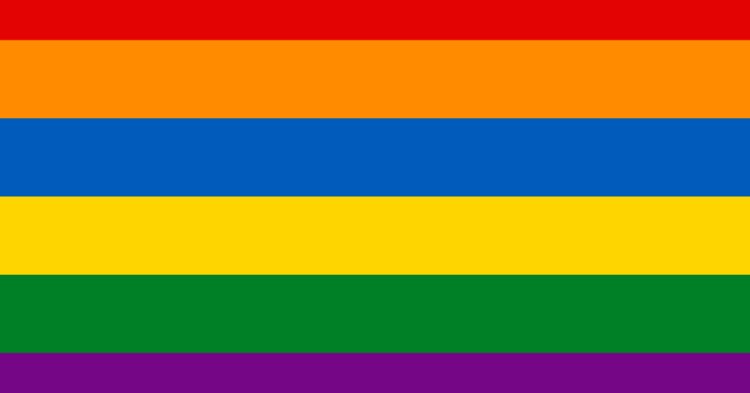The invasion of Ukraine has devastated the lives of Ukrainian civilians. For marginalised groups, war compounds inequalities that already exist and exacerbates them. The intersections of oppression due to race, sexuality, gender identity, or disability present further challenges in reaching safe asylum. These barriers have been particularly present for one of society’s most marginalised groups, the trans* [1] community.
‘Stuck’ in Ukraine
Over the past few days of the invasion, there have been various reports of trans* people attempting to leave Ukraine, but being stopped by border officials. If their identification states ‘male’, border officials won’t allow them to leave the country, despite the risks that await trans* people if they are forced to remain in a conflict zone. Speaking to CBS News, Zi Faámelu, a transgender woman living in Kyiv stated that ‘There’s no way Ukrainian border people can let me through [...] there’s no way’, and that ‘lives for trans people are very bleak here’. Several reports have also been recorded by Vice and the Thomas Reuters Foundation, in which trans* people express their fears in even attempting to cross borders into neighbouring countries. Reports can also be found on Reddit: one user wrote that after 3 days of traffic jams, she was ‘not able to cross the Ukrainian side of the border at all, as a [..] male by passport. Ukraine does not let those out’.
Through being unable to leave Ukraine, not only are trans* people forced to face the violence of the invasion, but their identities put them hugely at risk of particularly hateful forms of violence from Russian forces. Other members of the LGBTQI+ community have expressed their fear of suffering the persecution that queer people in Russia experience if Ukraine were to be occupied.
If trans* people were able to cross the border into Poland or Hungary, they would, at least in legal terms, hold the rights and protections afforded by being on EU soil. The right to non-discrimination based on sex or sexual orientation is protected by the Charter of Fundamental Rights of the European Union, and the values of human rights, equality, and human dignity are enshrined in the Treaty on European Unión (the Maastricht Treaty). In 2021, The European Commission adopted an initiative to extend the list of ‘EU crimes’ to include hate crime and hate speech, including towards the LGBTQI+ community.
However, while they may escape war, they will not escape persecution. Hungary and Poland remain two of the most hostile EU countries towards the LGBTQI+ community. In April, Viktor Orbán’s government will hold a referéndum on LGBTQI+ rights in the country, asking if citizens support a ban on content that ‘influences the development’ of children. In Poland, only just over 3 weeks ago, a law was passed that increases the government’s control over the teaching of queer issues in schools.
Life before war for trans* Ukrainians
In some countries across Europe, transgender people are able to change the gender on their identification documents through self-determination (Malta, Ireland, Belgium, Luxembourg, and Portugal) . However, in Ukraine, being transgender is classed as a medical disorder, and trans* people have to undergo a 2-year psychiatric evaluation before they are able to legally transition. So, as Zi comments, many trans* people live with their pre-transition sex on their docments - meaning that now, they are unable to leave the country.
How can the EU, and world, help?
Poland, where the vast majority of Ukrainian asylum seekers have travelled to, has already confirmed that it does not require documents to allow entry to Ukrainian asylum seekers, meaning that if trans* people were able to cross the border, their documents would not restrict access. Additionally, Poland’s Stonewall group, Grupastonewall, has a form on their Instagram page that allows either Polish citizens to offer accommodation and refuge to LGBTQI+ Ukrainians, or for Ukrainians to request help. But the problem lies in crossing the border in the first place.
Looking to the future, Ukraine has already begun its application to join the European Union, and 8 other states have written in support of an accelerated application for the country. If it were to be accepted, the Ukrainian LGBTQI+ community would be under the protection of EU law, which may help in putting the Ukrainian government under pressure to increase their rights and make the process of transitioning easier. The only questions which remain are whether or not it will be accepted, and if so, when?
If you are asking yourself ‘what can I do to help?’, there are several ways to show your support. Several Ukrainian charities that support LGBT+ Ukrainians are taking donations, such as Insight Ukraine and OutRight Action International Aid. Finally, showing support and solidarity for LGBTQI+ people in Ukraine, in our own countries, and across Europe, is vital. By spreading awareness of the additional barriers faced by trans* Ukrainian asylum seekers, we can help to influence support and put pressure on governments to intervene.
Conflict always, without exception, exacerbates existing inequalities, often in the most violent ways. The literal blockade is a manifestation of the barriers faced by trans* people, everyday but particularly now, as they continue to fight a ‘war within a war’ in Ukraine.


Follow the comments: |
|
